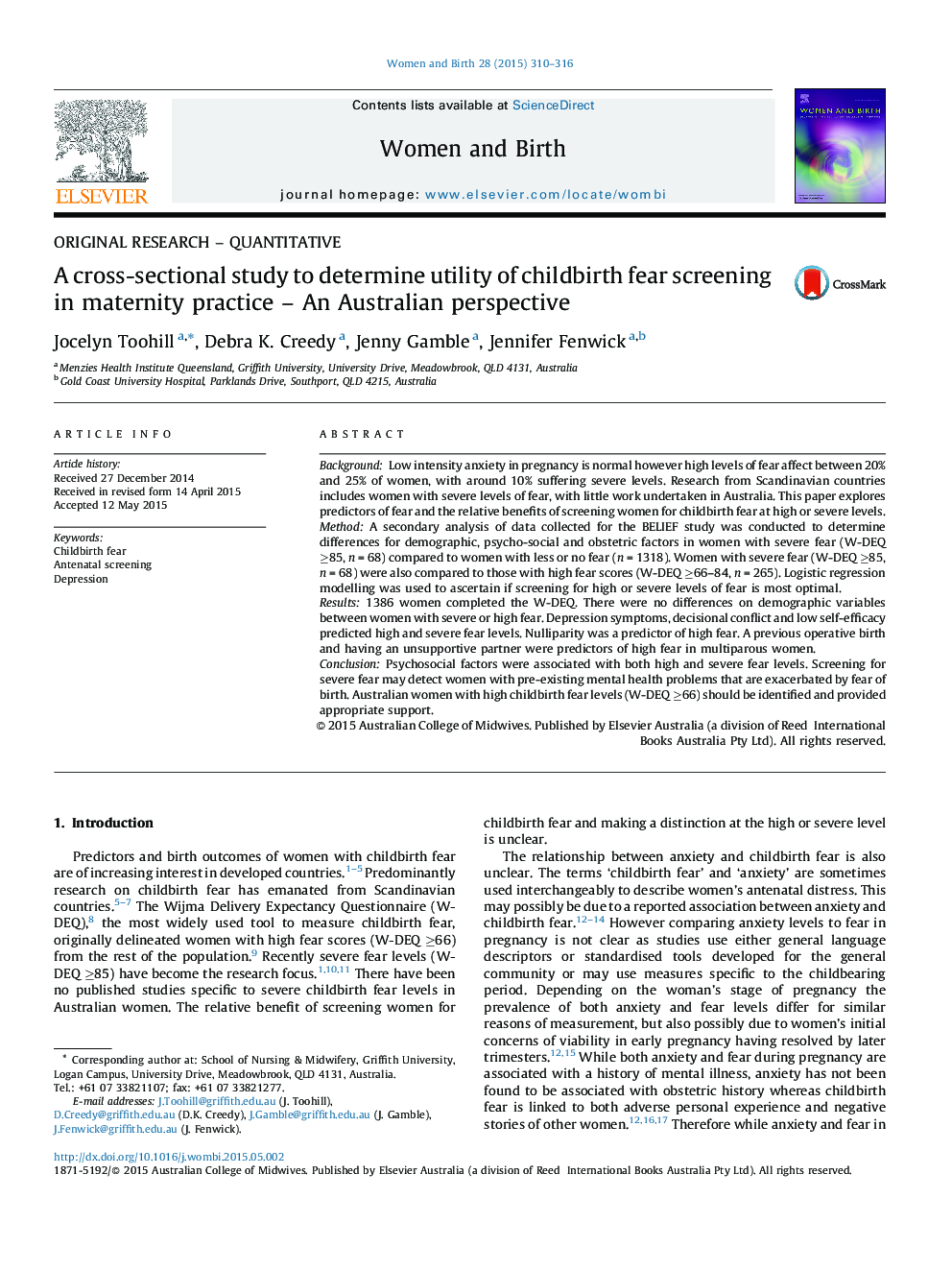| Article ID | Journal | Published Year | Pages | File Type |
|---|---|---|---|---|
| 2636493 | Women and Birth | 2015 | 7 Pages |
BackgroundLow intensity anxiety in pregnancy is normal however high levels of fear affect between 20% and 25% of women, with around 10% suffering severe levels. Research from Scandinavian countries includes women with severe levels of fear, with little work undertaken in Australia. This paper explores predictors of fear and the relative benefits of screening women for childbirth fear at high or severe levels.MethodA secondary analysis of data collected for the BELIEF study was conducted to determine differences for demographic, psycho-social and obstetric factors in women with severe fear (W-DEQ ≥85, n = 68) compared to women with less or no fear (n = 1318). Women with severe fear (W-DEQ ≥85, n = 68) were also compared to those with high fear scores (W-DEQ ≥66–84, n = 265). Logistic regression modelling was used to ascertain if screening for high or severe levels of fear is most optimal.Results1386 women completed the W-DEQ. There were no differences on demographic variables between women with severe or high fear. Depression symptoms, decisional conflict and low self-efficacy predicted high and severe fear levels. Nulliparity was a predictor of high fear. A previous operative birth and having an unsupportive partner were predictors of high fear in multiparous women.ConclusionPsychosocial factors were associated with both high and severe fear levels. Screening for severe fear may detect women with pre-existing mental health problems that are exacerbated by fear of birth. Australian women with high childbirth fear levels (W-DEQ ≥66) should be identified and provided appropriate support.
